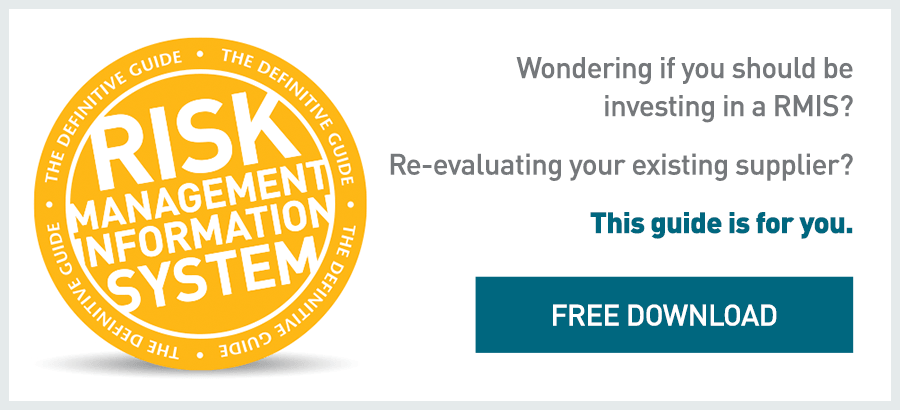 Risk management departments are often caught up in the day-to-day. How much valuable time must be spent keeping in touch with people in the field to ensure that incidents are being recorded properly? How many hours are devoted simply to collecting data from systems and spreadsheets siloed across the organization and at every vendor? Risk managers must then try to find the time in a 24-hour day to apply all of this business intel into insights that help them devise new loss control strategies and refine how they retain and transfer risk.
Risk management departments are often caught up in the day-to-day. How much valuable time must be spent keeping in touch with people in the field to ensure that incidents are being recorded properly? How many hours are devoted simply to collecting data from systems and spreadsheets siloed across the organization and at every vendor? Risk managers must then try to find the time in a 24-hour day to apply all of this business intel into insights that help them devise new loss control strategies and refine how they retain and transfer risk.
It's challenging work that is nearly impossible to accomplish with limited resources. But one might wonder if risk managers like it that way.
An admittedly unfair stereotype of risk managers is that of traditional insurance buyers. They're older with many years in the business, perhaps coming up through yeomans work like claims. They like paper. They wonder about the value of blogs and believe digital spreadsheets are the summit of technology.
Let's consider a few questions that can help us get to the heart of how risk managers view risk management software. Is it fair to say that the traditional view of a RMIS is that it can actually get in the way of they and their teams doing their jobs? Have risk managers taken the time to appreciate the potential benefits from risk management software? At a more transformational level, do risk managers see the power of the RMIS to innovate the very nature of their work?
An effective RMIS delivers efficiency and better control, saved hours and automated processes. But the technology is also a game-changer in that it can help organizations improve their risk management process by allowing them to leverage data, turning that data into information and information into better decision-making.
It is also a tool to manage upward. RMIS software can provide senior leadership with the information they need to believe the risk manager has their company's risks under control. It's about demonstrating in a way that non-insurance people can understand that, thanks to the risk manager, the organization has lowered its total cost of risk. A RMIS provides more than line-item data. Even the "canned reports" provided by a robust RMIS can clearly illustrate to a risk manager and more importantly, his or her senior management that, yes, we're doing the right thing here. Or no, it would be better for us to retain the first $5 million of our workers' comp risk versus transferring it on the traditional insurance market.
While risk managers are telling their story through the data, what better way than to tell it in pictures or pie charts, bar graphs and heat maps? Or what about telling it geographically, on a dynamic, business intelligence-based map? These visual analytics can be generated by the system in its regularly issued reports, quarterly, monthly or whatever frequency is needed to get the risk message across. Risk managers will be proud to put their name on these generated graphs. Again, the story can be told in terms of: Is the line going up or down? Is the slice of the pie getting smaller or larger? Are the bars getting wider or narrower?
Yet what we still find is that, despite the fact that risk managers can appreciate the value of risk management information system tools, they do not always fully realize that potential. That hesitation to roll up their sleeves and take the time to get familiar with a 21st century tool gets in the way. Instead, they may ask their staff to get to know the tool. These risk managers then risk, ironically, failing to see the bigger picture. If they can't see it, how will they help their bosses see it?
Joe Fitzpatrick is Director of Commercialization with the Aon eSolutions Global Product Management team. Joe works in the Atlanta Aon eSolutions office and can be reached by email or by phone at 770-308-5446.











